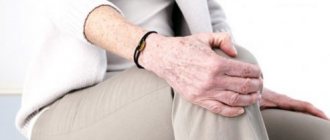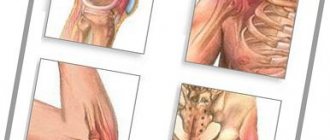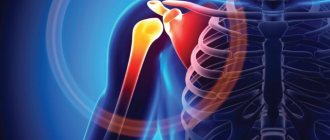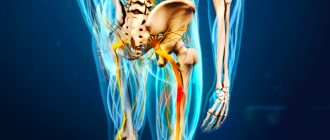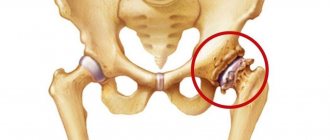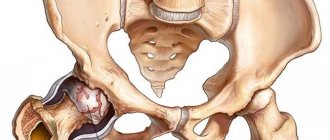Burning pain in the hands can occur for various reasons. This may be inflammation, lack of blood supply, destruction of large and small joints. But most often, burning pain in different parts of the arm is caused by damage to the nerve fiber. Tunnel syndromes, brachial plexitis, complications of cervical and cervicothoracic osteochondrosis are just some of the potential diseases that can affect the nerves.
Burning pain in the left arm may be a signal of trouble in the blood supply to the myocardium. This may be a clinical symptom of the onset of an acute heart attack. In such situations, the patient must be provided with cardiac care. If, against the background of general well-being, you suddenly have a severe burning pain in your left arm, and it does not go away within 10 to 15 minutes, then take a nitroglycerin tablet under your tongue. If there is no improvement after 5 minutes, call an ambulance.
In most cases, burning pain in the right arm is a symptom of nerve damage. The upper limb is innervated by the brachial plexus. It is formed by branches of the radicular nerves C4-C7 and T1. Responsible for the innervation of soft tissues (skin, muscles, blood vessels, ligaments and tendons, subcutaneous adipose tissue) in the shoulder girdle and free upper limb.
The brachial plexus is divided into two parts. One of them goes to the collarbone area, the other goes down to the axillary area. It is the subclavian branch that is responsible for providing innervation to the arm. In the axillary fossa the branch splits into three bundles. Further towards the hand they go separately and branch further. Of the seven short branches of the brachial plexus, only the suprascapular nerve (responsible for the articular capsule of the shoulder) and the axillary nerve (responsible for innervation of the skin of the anterior surface of the forearm) participate in the innervation of the arm.
Long branches form fibers responsible for the innervation of the entire free upper limb:
- musculocutaneous nerve – skin of the forearm, brachialis and biceps muscles;
- ulnar nerve - flexion of the hand and fingers, adductor muscles of the fingers, partially the skin of the palms and some fingers;
- median nerve - elbow joint, forearm muscles, first four fingers of the hand, wrist joint;
- cutaneous medial nerve - skin of the shoulder and forearm;
- radial nerve – extension of the wrist, hand, fingers, skin of the little finger and half of the ring finger.
Depending on the location of the burning pain, the neurologist will be able to determine the potential cause of its occurrence. Using functional tests, it is possible to identify areas where compression of the nerve fiber occurs or disruption of its trophism due to deterioration of blood supply.
If you experience burning pain in the fingers, hand, forearm or shoulder, immediately consult a neurologist. In Moscow, you can make an appointment for a free appointment with a doctor at our manual therapy clinic. Here you will be given a preliminary diagnosis, told about the possibilities of treatment using manual therapy methods, and given recommendations for additional clinical diagnostics.
Causes of burning pain in the hands
Potential causes of burning pain in the hands can be divided into inflammation, trauma, degenerative processes in the joints, tunnel syndromes, tissue trophic disorders due to vascular problems or compression syndrome.
Let's consider all these factors. It’s worth starting with traumatic damage to soft tissues and bones. These can be sprains, tears, fractures and cracks. As a result, a hematoma and swelling of the soft tissues forms. It compresses the nerve endings, and the patient may experience burning pain of varying intensity.
With fractures and the subsequent application of a plaster cast, compression of the soft tissue often occurs. It may also be a consequence of violating the rules for applying a hemostatic rubber tourniquet. When compression occurs, atrophy of the nerve fiber may occur, and during this period, burning pain occurs along the course of a large nerve.
Other reasons are as follows:
- osteochondrosis of the cervical and cervicothoracic region with compression of the radicular nerves forming the brachial plexus;
- intervertebral hernia or disc protrusion, leading to disruption of the shock absorption process during movements;
- spondylosis and spondyloarthrosis with deformation of uncovertebral, facet and facet intervertebral joints;
- Bechterew's disease or ankylosing spondylosis of the cervical and cervicothoracic spine;
- subluxation of the cervical and thoracic vertebrae;
- poor posture in the form of scoliosis, pathological kyphosis or lordosis;
- arthrosis of the shoulder joint;
- periarthritis of the glenohumeral joint;
- inflammation of the lymph nodes in the armpit;
- brachial plexus plexitis;
- destruction of the articular lip of the shoulder joint and pinching of the ulnar nerve;
- cubital tunnel syndrome (damage to the ulnar nerve);
- carpal tunnel syndrome;
- carpal valve syndrome;
- deforming osteoarthritis of the elbow and wrist joints;
- tendinitis, myositis, bursitis and other inflammatory diseases of the soft tissues of the joints.
In addition, circulatory disorders can be the cause of burning pain in the hands. Vascular pathologies can be caused by diabetic angiopathy and atherosclerosis of large vessels. In this case, the trophism of the nerve endings is disrupted, they begin to atrophy and the person experiences severe burning pain.
When examining, you should pay attention to the integrity of the outer skin. If there are traces of insect bites on them, then exposure to toxic substances cannot be ruled out. It is urgent to take an antihistamine tablet. If there is pronounced hyperemia on the surface of the forearm or shoulder, then the burning pain is probably associated with a chemical, thermal or radiation burn.
You should not try to independently diagnose a developing disease. It is necessary to consult a doctor in a timely manner. Only early treatment for most diseases of the musculoskeletal system allows for complete recovery.
Which doctor should you consult if you have pain when abducting your arm?
At the first manifestation of this symptom, you should immediately contact a good clinic and an orthopedist-traumatologist, who will accurately diagnose the cause of the disease, and, if necessary, prescribe a consultation with related specialists. Only proper diagnosis will help the patient receive adequate treatment and keep the shoulder joint healthy.
Have you or your loved ones started to experience pain when abducting your arm? Don't waste precious time! Qualified medical specialists are always ready to determine the cause of your illness and prescribe the most effective treatment regimen to return your sore shoulder to healthy mobility!
Burning pain in fingers and hands
Burning pain in the fingers may be a consequence of circulatory or innervation problems. Depending on where the pain is located,
A preliminary diagnosis can be made. If all fingers hurt at the same time, then most likely the patient develops a serious disease in the area of the elbow or shoulder joint, since the median and radial nerves are simultaneously affected. If only the little finger is affected, then there is a high probability that the wrist joint is affected or carpal tunnel syndrome develops. If there is a burning sensation in the area of the thumb, index, middle and ring fingers, there is a high probability of damage to the carpal valve or elbow joint.
Frequent burning pain in the hands can occur against the background of cervical and cervicothoracic osteochondrosis with total protrusion of the intervertebral disc. The fibrous ring loses its physiological height and cannot cope with shock-absorbing functions. Compression of the left and right radicular nerves begins simultaneously. This leads to the development of acute pain syndrome. The second probable cause is brachial plexitis. This is a dangerous neurological disease that, without timely treatment, leads to human disability.
If your shoulder, elbow hurts and your arm goes numb
Pain in the shoulder and elbow may mean that there is an active inflammatory process in the shoulder joint. Painful sensations intensify when a person tries to put his hand behind his neck, when lifting it up.
Signs of inflammation such as swelling, hyperemia and a local increase in temperature can also be found in a patient with damage to the shoulder joint. The pain intensifies at night, which can disturb sleep.
If your elbow or shoulder hurts and your arm goes numb, then this set of symptoms arises due to compression of the nerve: this sign can occur not only when the joint is inflamed, but also when it is dislocated. You also need to move the head into the glenoid cavity as carefully as possible so as not to damage the nerve endings.
If therapeutic measures are not taken in a timely manner, the function of the joint can be significantly impaired: contracture and atrophic changes in the muscles occur.
Burning pain in the joints of the hands
If burning pain occurs in the joints of the hands, it is important to promptly exclude degeneration and breakdown of cartilage tissue. The upper free limbs are subjected to serious physical stress in the process of life. Therefore, the articular surfaces wear out and collapse. Any joint consists of bone heads covered with synovial cartilage tissue. It absorbs synovial fluid and releases it in the process of depreciation during movements.
Deforming osteoarthritis of the shoulder, elbow and wrist joints develops gradually. At the initial stage, it gives burning pain that develops after physical activity. Only an experienced orthopedist can exclude such a disease. It can be treated only in the first and second stages. The third stage of deforming osteoarthritis requires joint replacement surgery.
How to prevent discomfort?
To maintain healthy joints and prevent elbow pain, it is recommended to follow a number of rules:
- protect yourself from hypothermia;
- control the level of physical activity;
- perform a set of gymnastic exercises for the health of the bone structure;
- undergo regular medical examinations;
- promptly eliminate foci of inflammation.
Pain in the elbow and shoulder of the left arm can develop for various reasons, some of which do not pose a threat to human health and are caused by an uncomfortable body position or a blow. However, there is a possibility of developing serious pathological processes, the symptom of which may be an unpleasant sensation in the hand. Therefore, it is recommended to immediately contact a specialist and identify, and if necessary, treat the root cause of the deviation.
Bibliography:
- https://health50.ru/zabolevaniya/spina/bolit-ruka-ot-plecha-do-loktya.html
- https://osteokeen.ru/problemy/diskomfort/bol-v-lokte-i-pleche-levoj-ruki.html
Burning pain in the arm muscle
It is impossible to distinguish a burning pain in an arm muscle from a pinched nerve on your own. The symptoms are very similar:
- sudden onset of sharp pain (most often after a sudden movement or lifting something heavy);
- numbness of the skin around the site of injury or pinching;
- immobility;
- any movement causes pain;
- palpation is painful.
A neurologist will be able to use diagnostic functional tests to make a differential diagnosis and rule out pinched nerves. If the burning pain is actually localized in the muscle, then it may be an internal hematoma, partial rupture of the muscle fiber or sprain, fibromyalgia.
All of these conditions are highly treatable using manual therapy techniques. You can make a free appointment with a neurologist or orthopedist. He will conduct an examination and diagnosis, make an accurate diagnosis and develop an individual course of therapy.
What studies are carried out to identify the cause of the deviation?
If your arm hurts greatly from shoulder to elbow, it is recommended to seek help from a doctor. They will conduct an initial examination, find out the reasons that influenced the appearance of unpleasant sensations, and if they suspect pathologies of organs of other systems, they will redirect you to specialized specialists. Additional studies are prescribed:
- X-ray examination;
- computed tomography;
- nuclear magnetic resonance examination;
- general blood examination for autoimmune pathologies.
Return to contents
Methods for treating burning pain in the hands
Sudden burning pain in the elbow joint of the right hand is a reason for an emergency visit to a doctor. Especially if the performance of professional duties is associated with tension in the elbow joints. This is how ulnar nerve neuritis may manifest itself. The disease is very dangerous and develops quickly. In advanced cases, there is a high probability of losing the ability to self-care. There is paralysis of the fingers of the right hand.
Treatment of diseases that cause burning pain in the hands can be carried out in the early stages using manual therapy methods. After the initial appointment, the doctor will be able to make a preliminary diagnosis and prescribe additional examinations. Their results will confirm or refute the primary diagnosis.
After making an accurate diagnosis, the doctor develops an individual course of treatment. Therapy begins with the need to detect and eliminate the potential cause of the development of pathological changes. The patient is given recommendations on changing lifestyle and nutrition, organizing work and sleeping space, introducing physical activity into his life, etc.
The course of treatment may consist of 5 – 8 sessions of various manual practices. These may be the following types of impact:
- laser treatment of joints and spinal column (often used for deforming osteoarthritis and osteochondrosis);
- traction traction of the spinal column (prescribed for protrusion and intervertebral hernias);
- osteopathy and massage (help restore microcirculation of blood and lymphatic fluid in areas of tissue damage);
- therapeutic exercises and kinesiotherapy (to strengthen the muscles of the neck and collar area, upper limbs);
- physiotherapy and reflexology (acupuncture);
- other techniques.
The course of treatment is developed depending on what disease is detected in the patient. If you have burning pain in your hands, we recommend that you schedule a free consultation with an orthopedist or neurologist at our manual therapy clinic. After examination and diagnosis, the doctor will give you information about the prospects for using manual therapy methods in your individual case.
Preventing pain from shoulder to elbow
In order to prevent diseases of the upper limb from occurring, you sometimes need to change your lifestyle for the sake of a healthy future.
Prevention measures include:
- adequate and daily physical activity to strengthen the muscles of the arms and back;
- weight loss to prevent atherosclerotic disease;
- avoiding situations in which you can get injured (fights, fights without rules, etc.);
- timely correction of any diseases, rehabilitation of chronic foci of infection;
- proper nutrition: limiting fatty, too salty foods, fast food, adding fresh vegetables, fruits, fish, nuts to the diet.
Symptoms of CVD
Cardiovascular diseases are numerous, have different origins and mechanisms of development. The main causes of cardiac pathologies are infectious and inflammatory processes, congenital developmental defects, damaging environmental factors (intoxication, hypothermia), metabolic disorders, and autoimmune reactions.
A peculiarity of the development of cardiovascular diseases is that they can occur hidden for a long time. Early signs of CVD, such as unmotivated weakness, fatigue, heaviness in the legs at the end of the working day, discomfort and discomfort in the chest, are not considered by people as symptoms of the disease that are worth paying attention to. Poor sleep, nausea not associated with food intake, clammy sweat, exercise intolerance, and headaches may indicate the appearance of heart problems.
Common cardiovascular diseases include:
- Atherosclerosis.
- Hypertonic disease.
- Cardiac ischemia.
- Inflammatory heart diseases.
- Violations of excitability and automatism of the myocardium.
- Heart defects.


